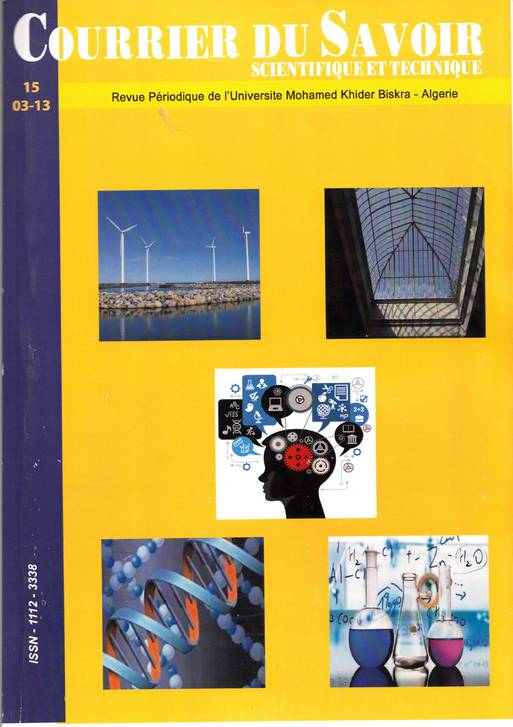MODELISATION 3D DU CREUSEMENT DE TUNNEL PAR TUNNELIER A FRONT PRESSURISE VALIDATION SUR LE METRO DE SHANGHAI SHIELD TUNNELLING VALIDATION OF A COMPLETE 3D NUMERICAL SIMULATION ON THE YANGTZE RIVER TUNNEL, SHANGHAI
Résumé
La réalisation de tunnels à faible profondeur en site urbain nécessite une évaluation préalable des effets du creusement sur les
ouvrages existants. Dans le cas du creusement par tunnelier à front pressurisé, le phasage des travaux est un problème
d’interaction sol/structure hautement tridimensionnel et les différentes opérations réalisées par le tunnelier rendent très
complexe une modélisation numérique complète du problème et donc l’évaluation des mouvements induits. Une procédure de
simulation tridimensionnelle, utilisant le code en différences finies Flac-3D (Fast Lagrangian Analysis of Continua en 3
Dimensions), prenant en compte de manière explicite les principales sources de mouvements dans le massif encaissant est
proposée. Elle est illustrée dans le cas particulier du métro de Shanghai, creusé à l’aide du plus grand bouclier jamais utilisé et
pour lequel des données expérimentales existent, les sols rencontrés étant saturés et caractérisés par une faible résistance.
La confrontation des résultats de simulation numérique avec les mesures in-situ montre que la procédure de simulation 3D
proposée est pertinente, en particulier dans la représentation adoptée pour les différentes opérations réalisées par le tunnelier
(excavation, soutènement du front de taille, avancement, pose du revêtement, injection du vide annulaire, …).
The excavation of shallow tunnels in urban areas requires a previous evaluation of their effects on the existing constructions. In
the case of shield tunnel boring machines, the different achieved operations are very complex to represent in a complete
numerical simulation. Therefore the assessment of the tunneling-induced soil movements is difficult. In the case of shield
tunnel boring machines, the different achieved operations is a highly three-dimensional problem of soil/structure interaction
and are very complex to represent in a complete numerical simulation. Therefore the assessment of the tunnelling-induced soil
movements is difficult. A three-dimensional simulation procedure, using finite differences code Flac-3D (Fast Lagrangian
Analysis of Continua in 3 Dimensions), taking into account in an explicit manner the main sources of movements in the soil
mass is proposed. It is illustrated in the particular case of the Yangtze River Tunnel of Shanghai for which experimental data
are available and where the crossed soils are saturated and characterised by weak shear strength. The comparison of the
numerical simulation results with the in-situ measurements shows that the 3D procedure of simulation proposed is relevant, in
particular in the adopted representation for the different operations achieved by the tunnel boring machine (excavation,
confining pressure, advancement, installation of the tunnel lining, grouting of the annular void, …).
Références
52
Underground Construction in soft Ground, Bakker et
al (eds) Taylor & Francis Group, London, 81-86.
[15] Yan J., Emeriault F., Kastner R. (2008). Validation
d’une procédure de modélisation numérique des
mouvements induits par un tunnelier de très grand
diamètre dans les argiles molles. 26e Rencontres
Universitaires de Génie Civil, Nancy, 4 - 6 juin 2008.
8 pages. [1] Bezuijen, A., Talmon, A.M., Kaalberg, F.J., Plugge, R.
2005. Field measurements of grout pressure during
tunnelling of Sophia Rail Tunnel. Tunneling.
GeoDelft, p.83-93.
[2] Bezuijen, A. et Talmon, A.M. 2006. Grout properties
and their influence on back fill grouting. Geotechnical
Aspects of Underground Construction in soft Ground-
Bakker et al. (eds) Taylor & Francis Group, London,
ISBN 0 415 39124 5, 187-193.
[3] Broere, W. & Brinkgreve, R.B.J. (2002). Phased
simulation of a tunnel boring process in soft soil.
Numerical Methods in Geotechnical Engineering,
Mestat (ed.), Presses de l’ENPC/LCPC, Paris, 529-
536.
[4] Demagh, R., Emeriault F. et Kastner R. 2008.
Modélisation 3D du creusement de tunnel par tunnelier
à front pressurisé dans les sols surconsolidés. Journées
Nationales de Géotechnique et de Géologie de
l’Ingénieur (JNGG’08) Nantes, 18-20 juin 2008, 305-
312.
[5] Demagh R., Emeriault E. & Kastner R. (2009). Shield
tunnelling -Validation of a complete 3D numerical
simulation on 3 different case studies. Euro:Tun 2009.
2nd
International Conference on Computational
Methods in Tunnelling. Ruhr University Bochum,
September 2009, 77-82.
[6] Demagh R., Emeriault F. & Kastner R. (2009).
Modélisation 3D du creusement de tunnel par tunnelier
à front pressurisé – Validation sur 3 cas d’études. 17ème
Conférence de Mécanique des Sols et de Géotechnique
(17ème
ICSMGE), 5-9 Octobre 2009, Alexandrie,
Egypte, 77-82.
[7] Dias, D., Kastner, R. & Maghazi M. 2000. 3D
simulation of slurry shield tunnelling. Geotechnical
aspects of underground construction in soft ground,
Kusakabe, Fujita & Miyazaki eds., Balkema,
Rotterdam, 351-356.
[8] Dierkens, M. 2005. Mesures rhéologiques et
modélisation de matériaux en cours de prise. PhD
thesis, INSA-Lyon.
[9] Kasper, T. et Meschke, G. 2004. A 3D finite element
simulation model for TBM tunnelling in soft ground.
International Journal for Numerical and Analytical
Methods in Geomechanics 28, 1441-1460.
[10] Kasper, T., Meschke, G. (2006). On the influence of
face pressure, grouting pressure and TBM design in
soft ground tunnelling. Tunnelling and Underground
Space Technology 21, 160-171.
[11] Mroueh, H. et Shahrour, I. 1999. Modélisation 3D du
creusement de tunnels en site urbain. Revue Française
de Génie Civil 3, 7-23.
[12] Talmon, A.M., Aanen, L., Bezuigen, A. and van der
Zon, W.H. 2005. Grout pressure around a tunnel
linning. Tunnelling. A Decade of Progress. GeoDelft,
77-82.
[13] Thépot, O. 1999. Un nouvel essai d’auscultation des
micro-tunnels en vue de vérifier la qualité des
injections de blocage. AFTES, 197-201.
[14] Vanoudheusden, E. et al. (2006). Analysis of
movements induced by tunnelling with an earth-
pressure balance machine and correlation with
excavating parameters. Geotechnical Aspects of


